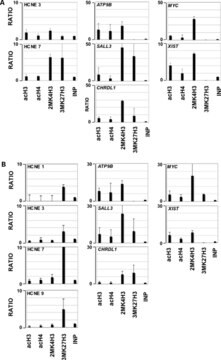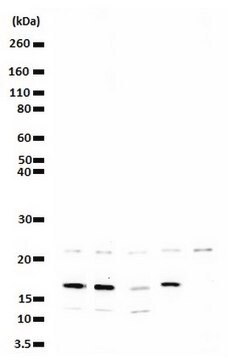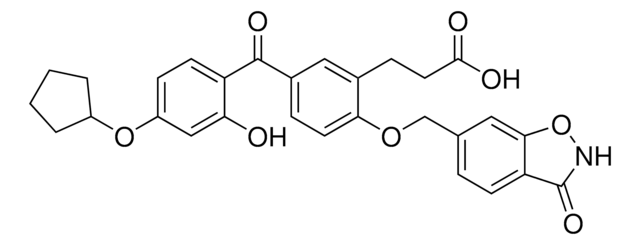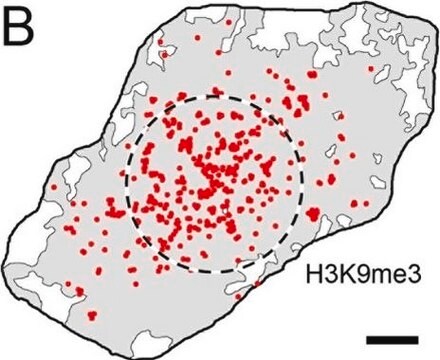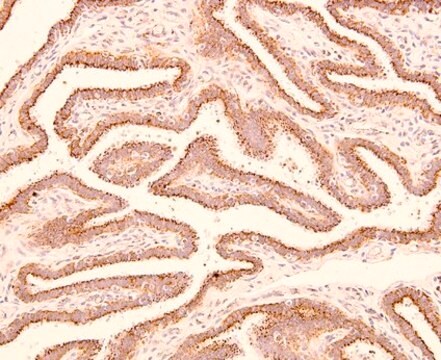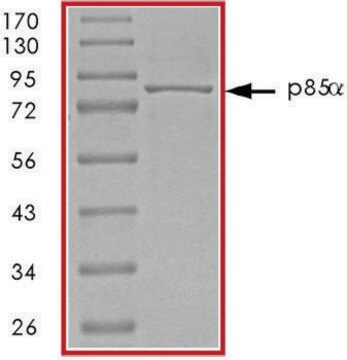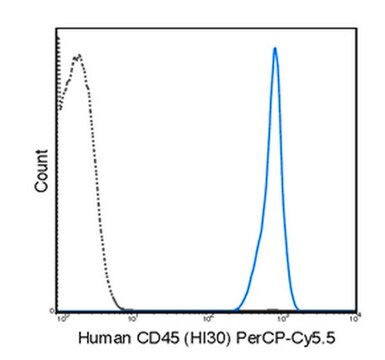07-595
Anti-acetyl-Histone H4 (Lys12) Antibody
serum, Upstate®
Sinónimos:
H4K12Ac, Histone H4 (acetyl K12)
About This Item
Productos recomendados
origen biológico
rabbit
Nivel de calidad
forma del anticuerpo
serum
tipo de anticuerpo
primary antibodies
clon
polyclonal
reactividad de especies
Saccharomyces cerevisiae, human
fabricante / nombre comercial
Upstate®
técnicas
ChIP: suitable (ChIP-seq)
dot blot: suitable
western blot: suitable
isotipo
IgG
Nº de acceso NCBI
Condiciones de envío
dry ice
modificación del objetivo postraduccional
acetylation (Lys12)
Información sobre el gen
human ... HIST2H4B(554313)
Descripción general
Acetylation of histone H4 occurs at several different lysine positions in the histone tail and is performed by a family of enzymes known as Histone Acetyl Transferases (HATs).
Especificidad
Inmunógeno
Aplicación
Epigenetics & Nuclear Function
Histones
Calidad
Descripción de destino
Forma física
Almacenamiento y estabilidad
Nota de análisis
Acid extracted proteins from HeLa cells treated with sodium butyrate
Otras notas
Información legal
Cláusula de descargo de responsabilidad
¿No encuentra el producto adecuado?
Pruebe nuestro Herramienta de selección de productos.
Código de clase de almacenamiento
10 - Combustible liquids
Clase de riesgo para el agua (WGK)
WGK 1
Certificados de análisis (COA)
Busque Certificados de análisis (COA) introduciendo el número de lote del producto. Los números de lote se encuentran en la etiqueta del producto después de las palabras «Lot» o «Batch»
¿Ya tiene este producto?
Encuentre la documentación para los productos que ha comprado recientemente en la Biblioteca de documentos.
Nuestro equipo de científicos tiene experiencia en todas las áreas de investigación: Ciencias de la vida, Ciencia de los materiales, Síntesis química, Cromatografía, Analítica y muchas otras.
Póngase en contacto con el Servicio técnico